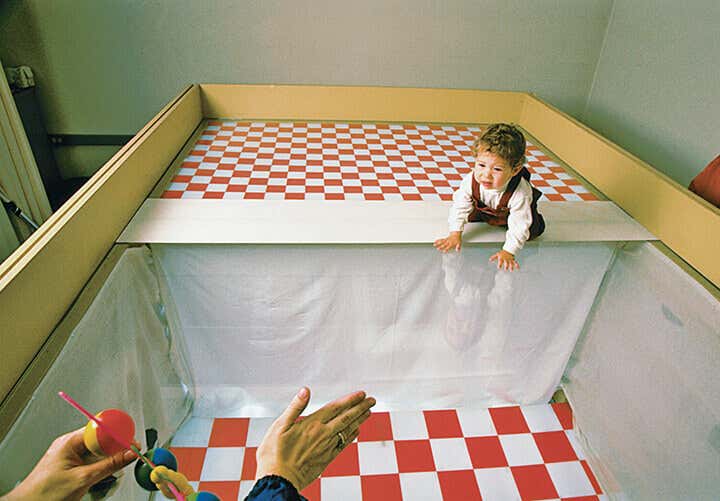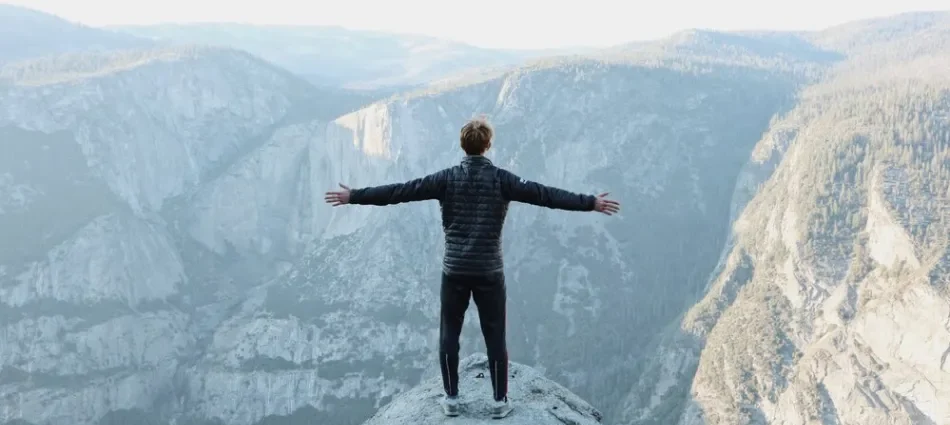Fear of heights or acrophobia generates high levels of anxiety in people who suffer from it. Situations involving a significant height, such as looking out from a balcony, being on the edge of a cliff, or being on a high viewing platform, are typical of this type of phobia.
When we talk about fear of heights or acrophobia, we are referring to a specific phobia. A specific phobia is characterized by fear or anxiety of clearly defined objects or situations, which can be called phobic stimuli.
Characteristics of specific phobias
Specific phobias, such as fear of heights, have the following characteristics:
- Intense fear or anxiety about a specific object or situation (e.g., flying, heights, animals, receiving an injection, seeing blood, etc.)
- The phobic object or situation almost always causes immediate fear or anxiety.
- The phobic situation is actively avoided or resisted with intense fear or anxiety.
- Fear or anxiety is disproportionate if we analyze the real danger posed by the specific object or situation and the sociocultural context.
- The fear, anxiety, or avoidance is persistent, typically lasting six months or more.
- The anxiety, fear, or avoidance causes clinically significant distress or impairment in social, occupational, or other important areas of functioning.
It is common for people to have multiple specific phobias. The average person with a specific phobia fears three objects or situations. About 75% of people with a specific phobia fear more than one situation or object.
Acrophobia or fear of heights
We should not confuse acrophobia with vertigo, although there is a relationship between the two terms. Acrophobia, as its name suggests, is a phobia; vertigo would be more like a very characteristic sensation in which we feel that everything moves. The confusion of the two terms results in the fact that acrophobia is related to height and vertigo may also be related (the same sensation can appear in response to other stimuli, such as speaking in public).
A person who suffers from a fear of heights may present different physiological symptoms. These include dizziness, tachycardia, motor paralysis, sweating, etc. Another common reaction to height is to lower the body’s center of gravity, adopting measures such as crawling on the ground, squatting, or bending over. Thus, the symptoms of fear of heights or acrophobia are similar to those of any other specific phobia.
Causes of acrophobia
Research has confirmed that fear of heights is found in almost all people and animals with a sense of sight. In some, it may be weaker and in others stronger, but it is almost always present. And the fact is that acrophobia is a defense mechanism. It makes sense if we think about it. If we did not suffer from fear of heights, we would be very likely to have an accident.
There is a famous experiment that demonstrates this. The visual cliff experiment was conducted by psychologists Gibson and Walk in 1960. It involved placing a glass pane on a small cliff and having a baby crawl over it. The baby refused to cross the small cliff, even in the presence of their mothers calling to them from the other side. So it seems that fear of heights is an evolutionary survival mechanism.

How can I overcome my fear of heights?
As we have seen, fear of heights is an adaptive emotion that helps us survive. Thus, it is not desirable to overcome this fear. However, if this fear becomes a phobia (we have already seen the characteristics of a specific phobia) then it may be necessary to consult a specialist.
The treatment of choice for acrophobia is live exposure to the feared stimulus, in this case, heights. In some cases, it is also useful to supplement live exposure with relaxation techniques.
Relaxation can be used as a complement to exposure because relaxation itself has little therapeutic effect on phobic disorders. Exposure to heights in real life means being present in the situation we fear, for example, a balcony on the eighth floor of a building.
One of the common problems in the treatment of phobias has to do with the appearance of panic attacks. In this sense, it seems that practicing exposure regularly is incompatible with the occurrence of these attacks.
However, the likelihood of this occurring increases if the patient makes catastrophic interpretations of the situation. In these cases, it is necessary to try to counteract this type of thinking by training in the use of appropriate thoughts.
If a panic attack occurs, try to stay in the situation until it subsides. Move as far away from the situation as possible and return to it as soon as possible.
The live exhibition
As we said, during this type of treatment the patient is forced to confront his fears directly, in this case of heights. It involves facing the different situations that he previously avoided.
Live exposure can be done in different ways. The most important ones are the following:
- Flooding. This consists of rapid exposure to anxiety-provoking stimuli, preventing escape from occurring. It is the most effective in the case of specific phobias such as fear of heights.
- Systematic in vivo desensitization. It consists of direct exposure to the feared stimulus but in a gradual manner.
- Participant modeling. It is based on vicarious reinforcement and coping strategies focused on the effects of performance. It is useful when behavioral skills that the person does not possess are required to cope with the situation.
As we have seen, the most effective treatment for fear of heights is to expose oneself to them without escaping until anxiety levels subside. This can be done in different ways, but the most effective is through flooding.
In any case, we recommend that you consult a psychologist who specializes in acrophobia. Only he or she will be able to design a treatment plan that is appropriate to your level of fear.
